Using visual brain teasers in the classroom encourages critical thinking in your students, and let’s face it: Kids love this kind of game-based learning! We have searched the internet for some simple, yet effective brain games that will encourage logical thinking and help your students develop those all-important problem-solving skills.
How to Use Brain Teasers in the Classroom
Before we dive in, let’s talk about some of our teacher team’s favorite uses for visual brain teasers in the classroom. This list is not exhaustive by any means, but it may spark inspiration.
- Project brain teasers onto your white board in the morning to serve as a bell-ringer activity as students enter the classroom in the morning. (These Google Slides full of brain teasers are perfect for projecting!)
- Use brain teasers as a warm-up activity to get your students in thinking mode.
- Print out visual brain teasers that students can select as a fast finisher activity.
- As a community builder activity. Build community in your classroom with low stakes group work! Assign small groups of students a brain teaser or brain game that they have to solve together to encourage teamwork.
Visual Brain Teasers for Kids
The answers to these brainteasers can all be found at the end of this post, so we won’t give them away until you’ve had a chance to do a little mental workout and improve your own lateral thinking before you try them out with your students.
1. What Comes Next?
Let’s start with a brainteaser for pattern recognition. Can your students work out which patterned block goes in the fourth spot?

2. How Many Blocks Are in This Tower?
A brainteaser to test students’ spatial visualization and their ability to study 3D shapes. Can your students determine how many blocks are in this 3D tower?

Studying 3D shapes? This interactive slide deck has 30 slides to introduce real-life 3D objects!
3. Spatial Visualization Test
This brainteaser is great to test spatial visualization. Students have to mentally put together the 3D cube to determine the correct net.
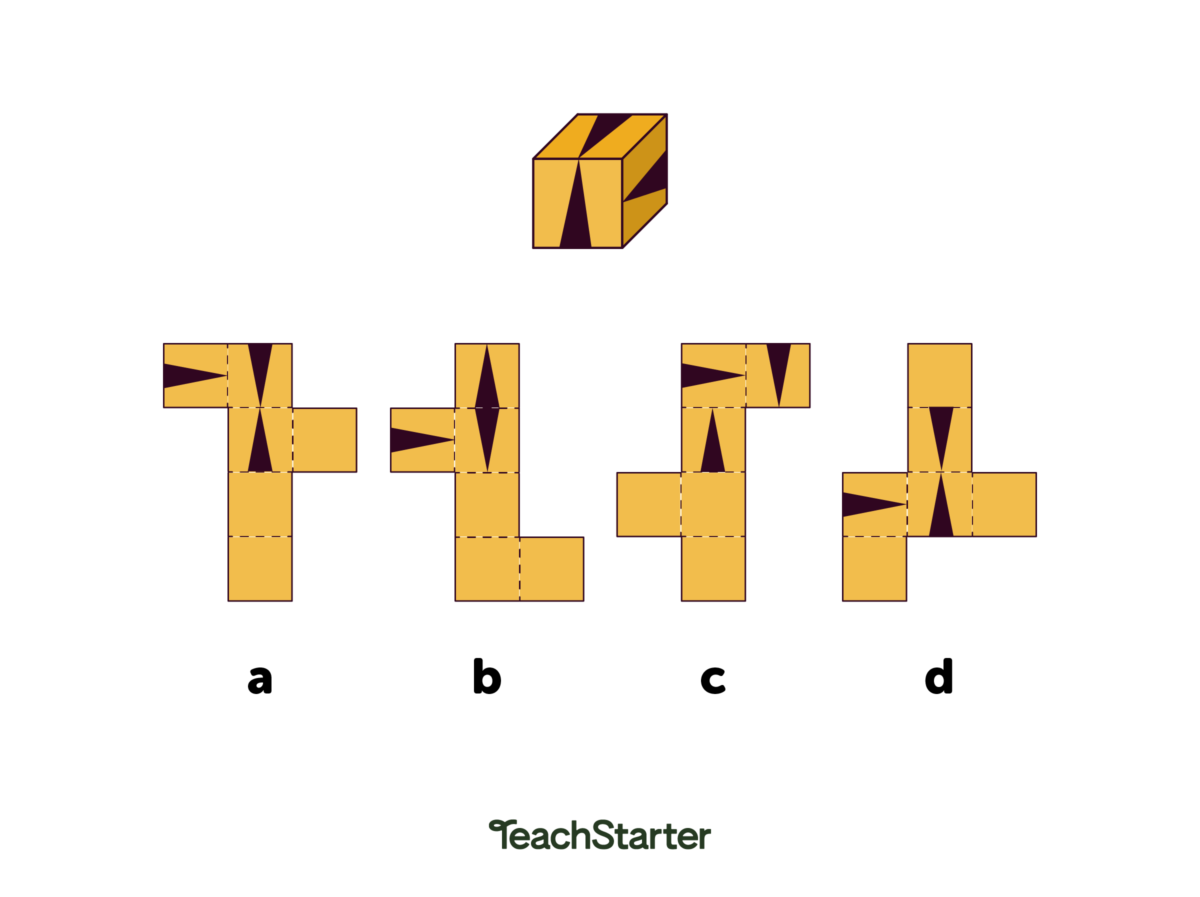
Print out 3D nets to turn the brain teaser into a hands-on activity!
4. How Many Triangles?
In this visual brainteaser, students need to put their brains to work to figure how many triangles there are in the image.
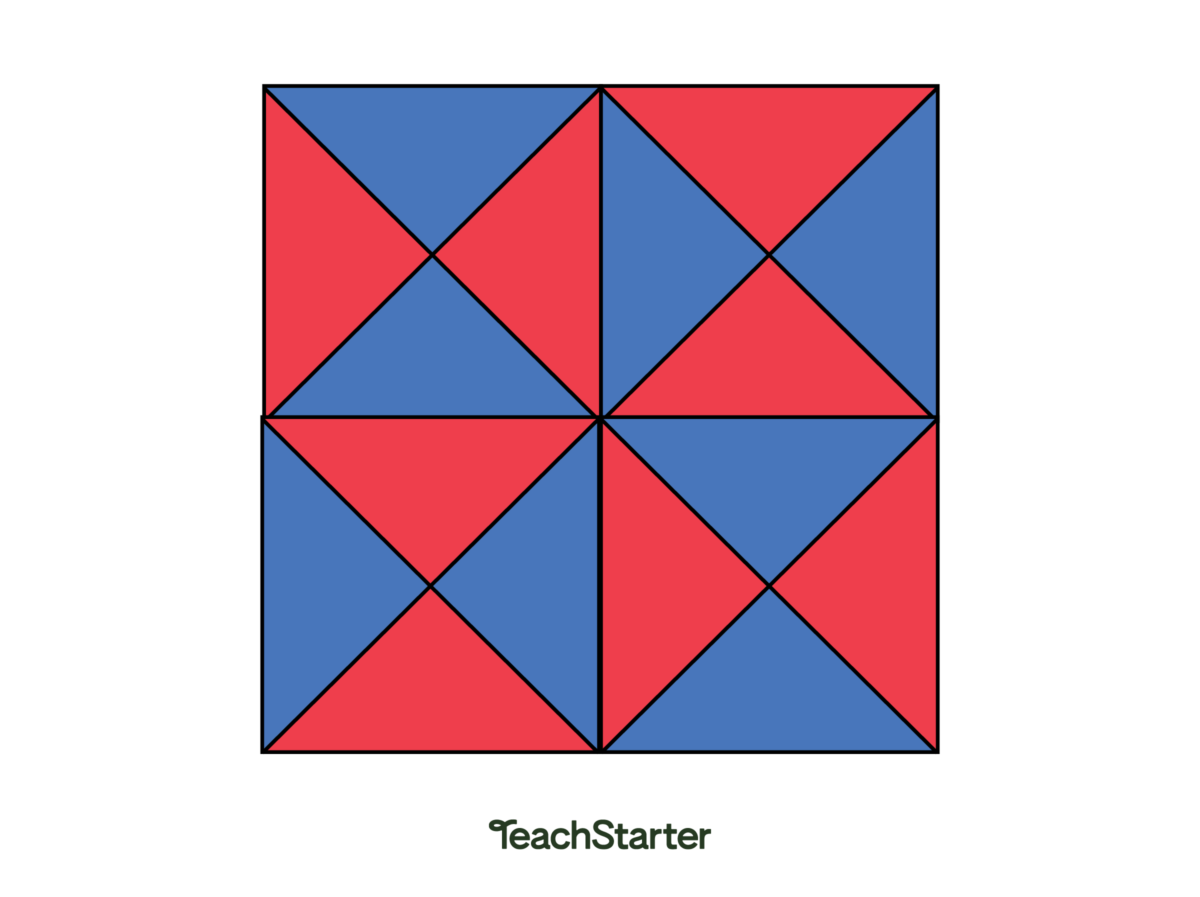
Explore our teacher team’s favorite resources for teaching about triangles!
5. How Many Squares?
This one is similar to the brain game above; however this time, students need to figure out how many squares they can see.
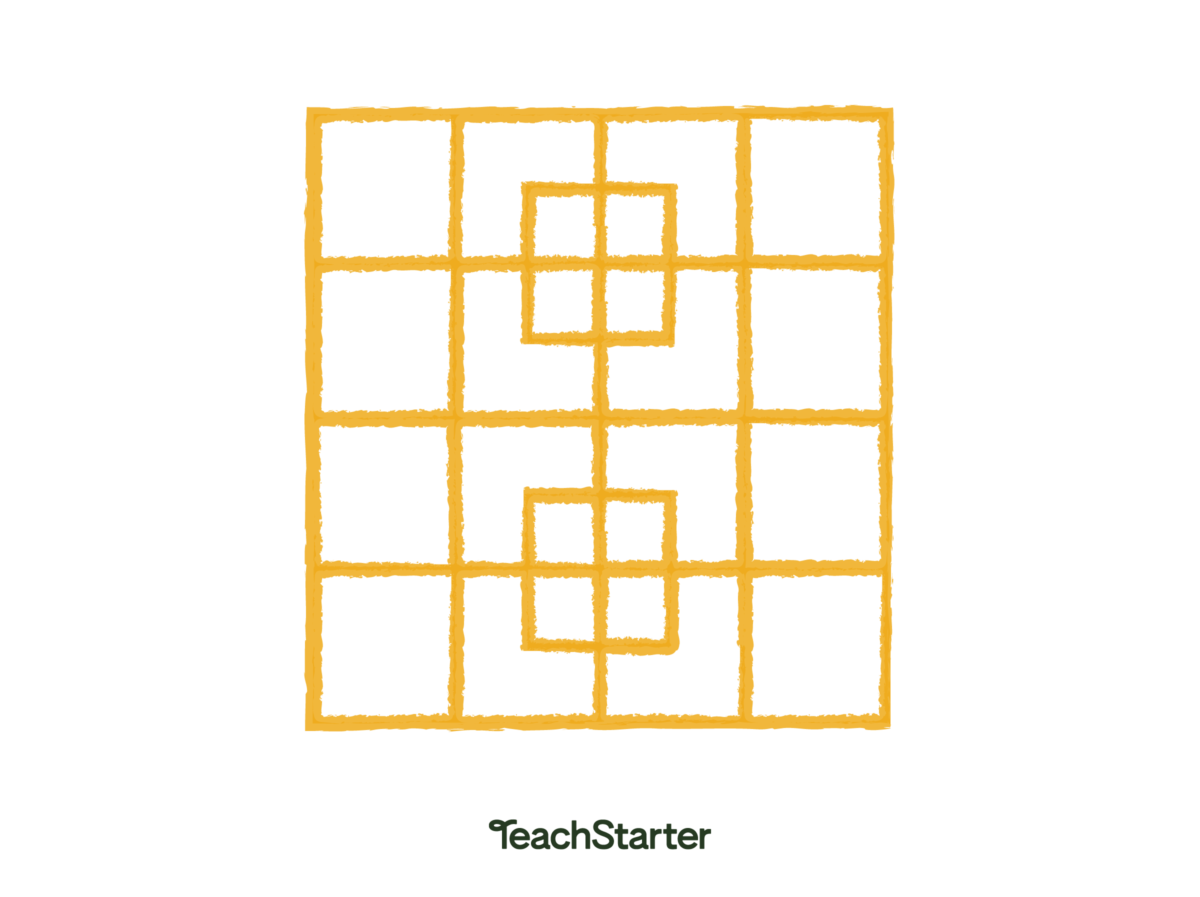
6. Move one glass only…
In this visual brainteaser, students can see three glasses on the left that are full and three on the right that are empty. If they make one small change, they can make a row of alternately full and empty glasses, but they only do one change! What do they have to do?
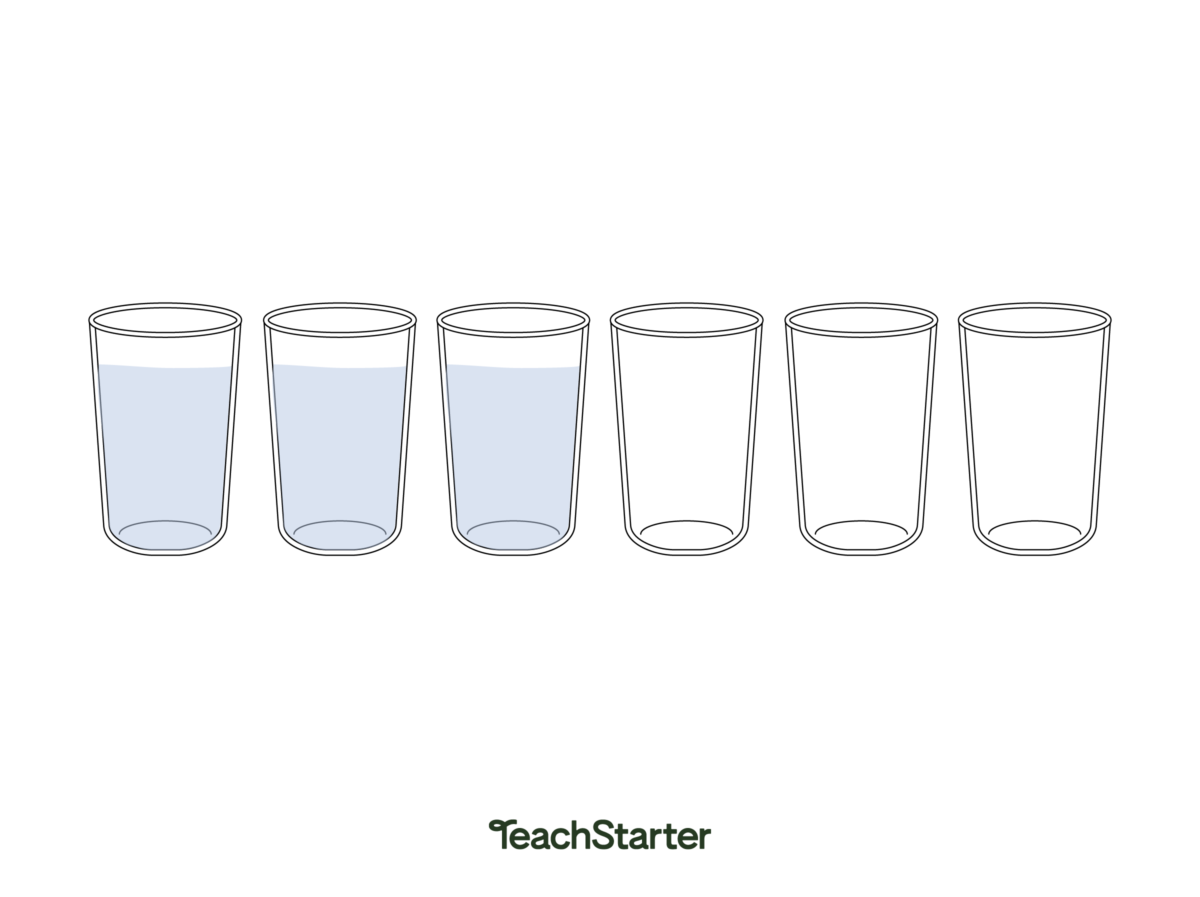
Once they’ve figured out the answer, how about trying a kid-friendly STEM experiment with water?
7. Make 10
The matchstick test is a great problem-solving brainteaser. Students need to remove six matches to make 10. Which ones do they move?
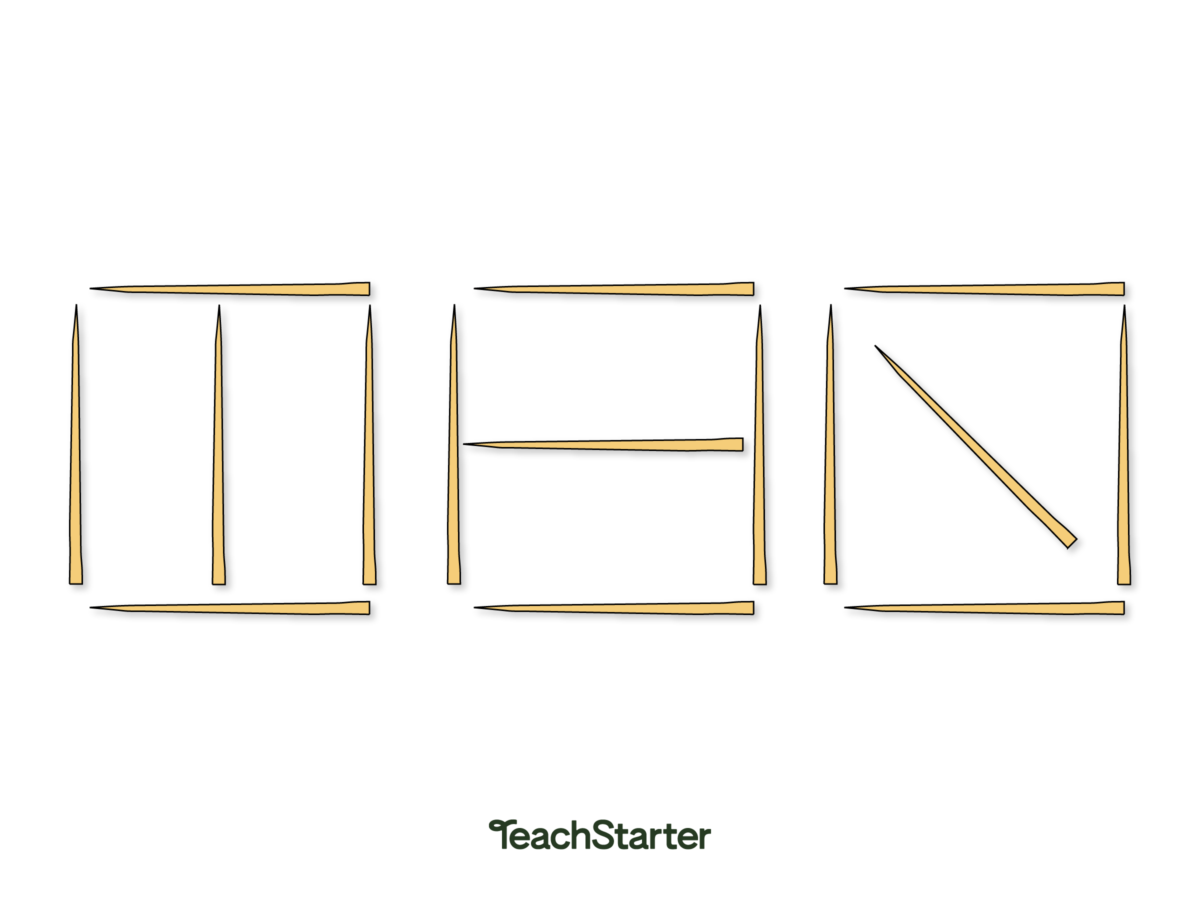
8. Top View
In this non-verbal brainteaser, students must figure out which is the top view. You may like to time them to see who can work out this one the quickest…
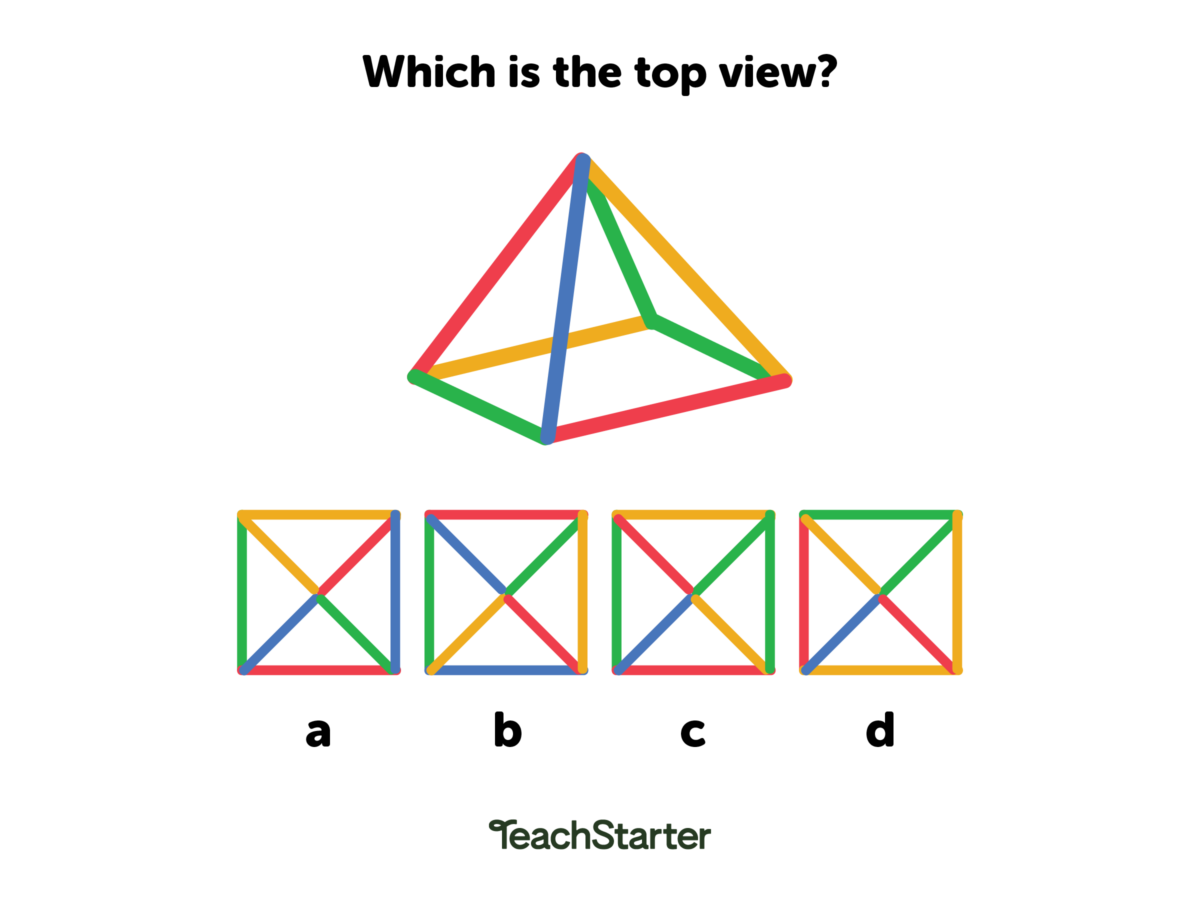
9. Which Parking Spot?
This visual brainteaser was spotted on a Hong Kong first-grade student admissions test, and it’s a great puzzle to encourage children to think laterally. Can you work it out? Apparently, children around the age of 6 are much more likely to solve this problem than older students and even adults.
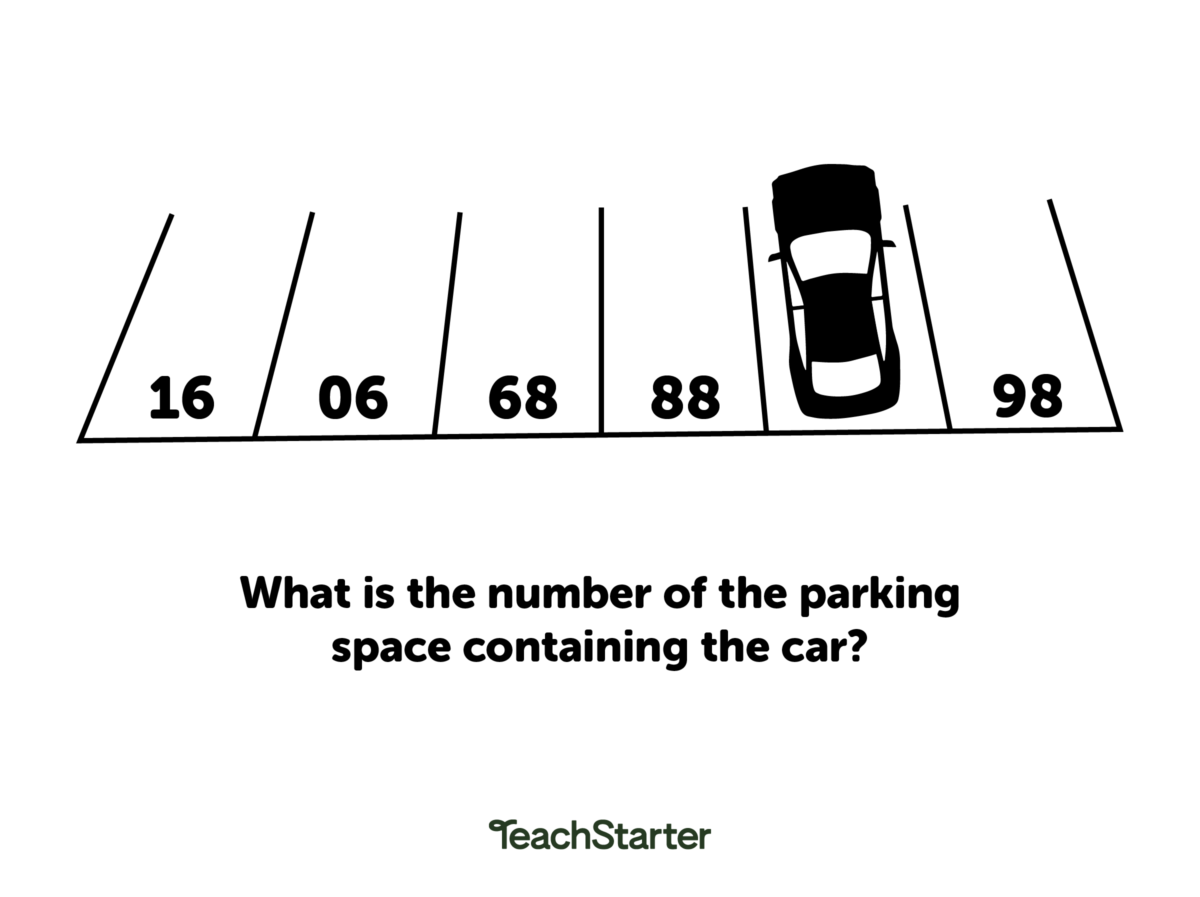
10. What Do We Weigh?
This is a great mathematical problem-solving activity for students to figure out the weight of a frog, sheep, and horse. Can they do the math to find out how much each individual animal weighs and then determine the total weight of all three?
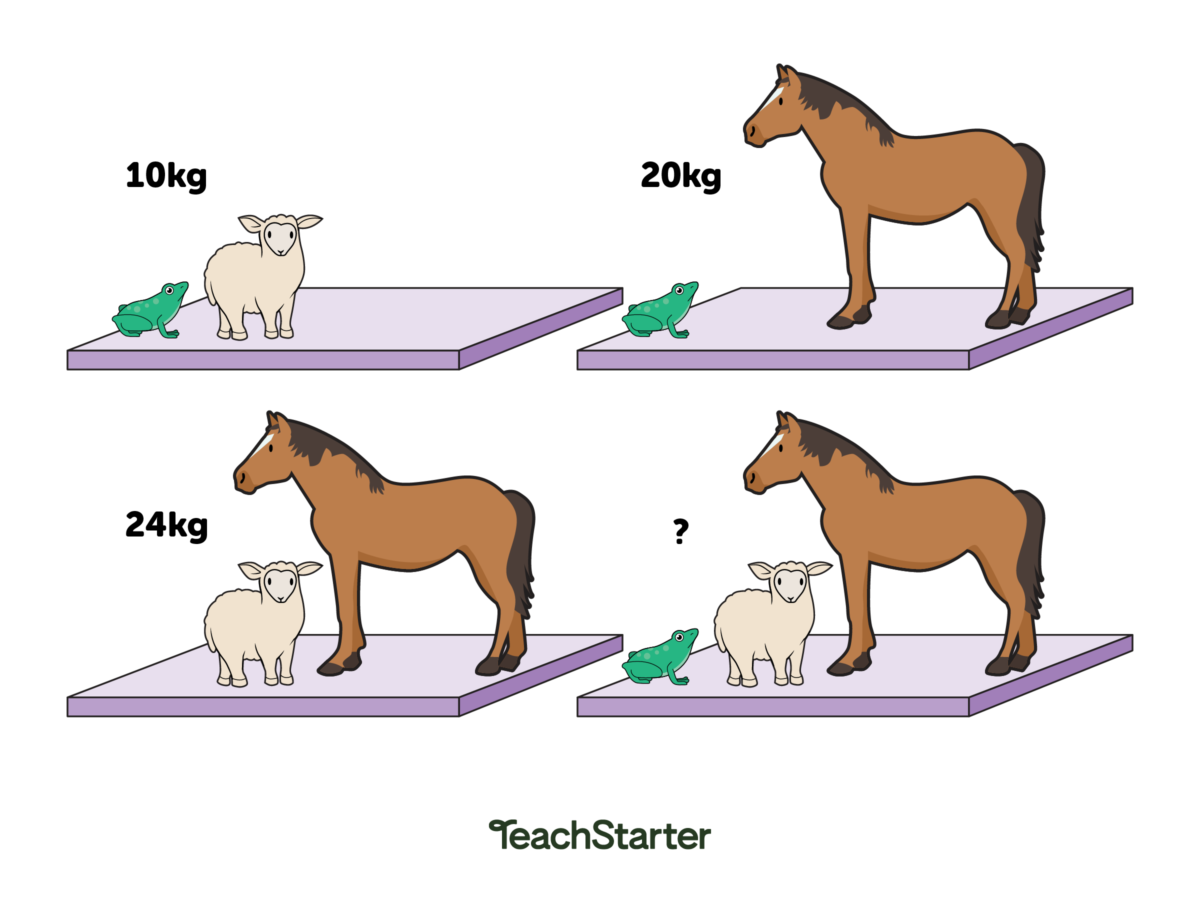
Finished?
Finished these visual brain teasers with your class? Check out some of our printable brain teaser resources that can be sent home with your students for some game-based learning at home or right in the classroom:
[resource:8008] [resource:12844] [resource:12383] [resource:6247]
Don’t forget the 20 brainteaser task cards that get your students moving and thinking, using common classroom supplies such as crayons to solve problems.
Answers
- Opposite squares are exchanged in this problem, so the answer is A.
- There are 9 blocks.
- B and C can be immediately rejected visually. D will create a mirror image of the given cube. So the correct answer is A.
- There are 44 triangles.
- There are 40 squares.
- Pour the second glass from the left into the empty glass second from the right.
- You can make the word ‘ten’ by removing the bottom matchstick and two side matchsticks from the first letter. The far-right matchstick on the second letter and the top and bottom matchstick on the third letter.
- The answer is C.
- Turn the picture upside down. You will then see the following number sequence: 86, ?, 88, 89, 90, 91. So the answer is 87.
- Calculations will determine the weight of the horse is 17 kg, the frog weighs 3 kg, and the sheep weighs 7 kg. The total weight is 27 kg!








7 Comments
No comments yet.